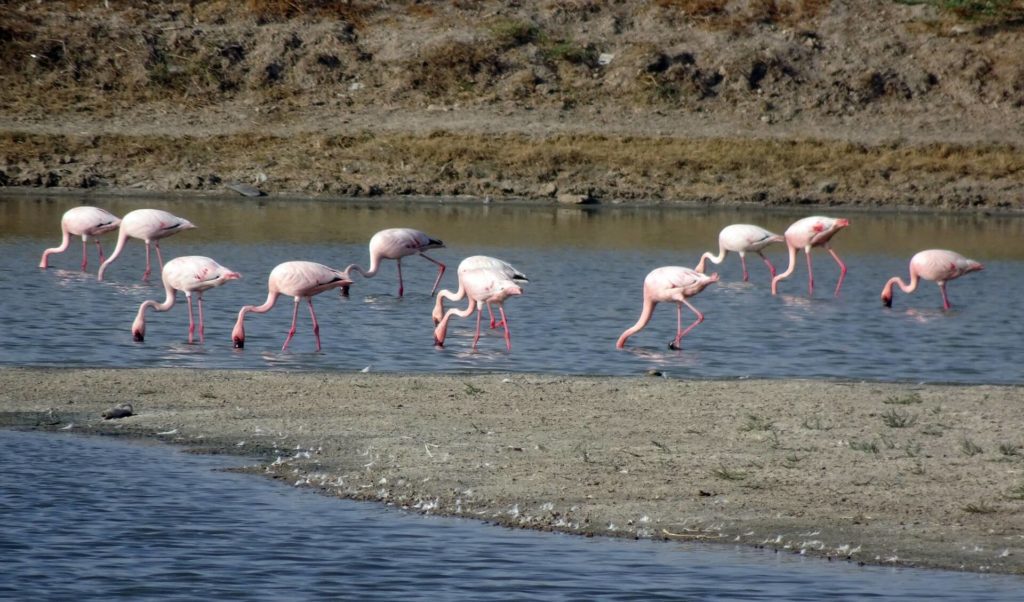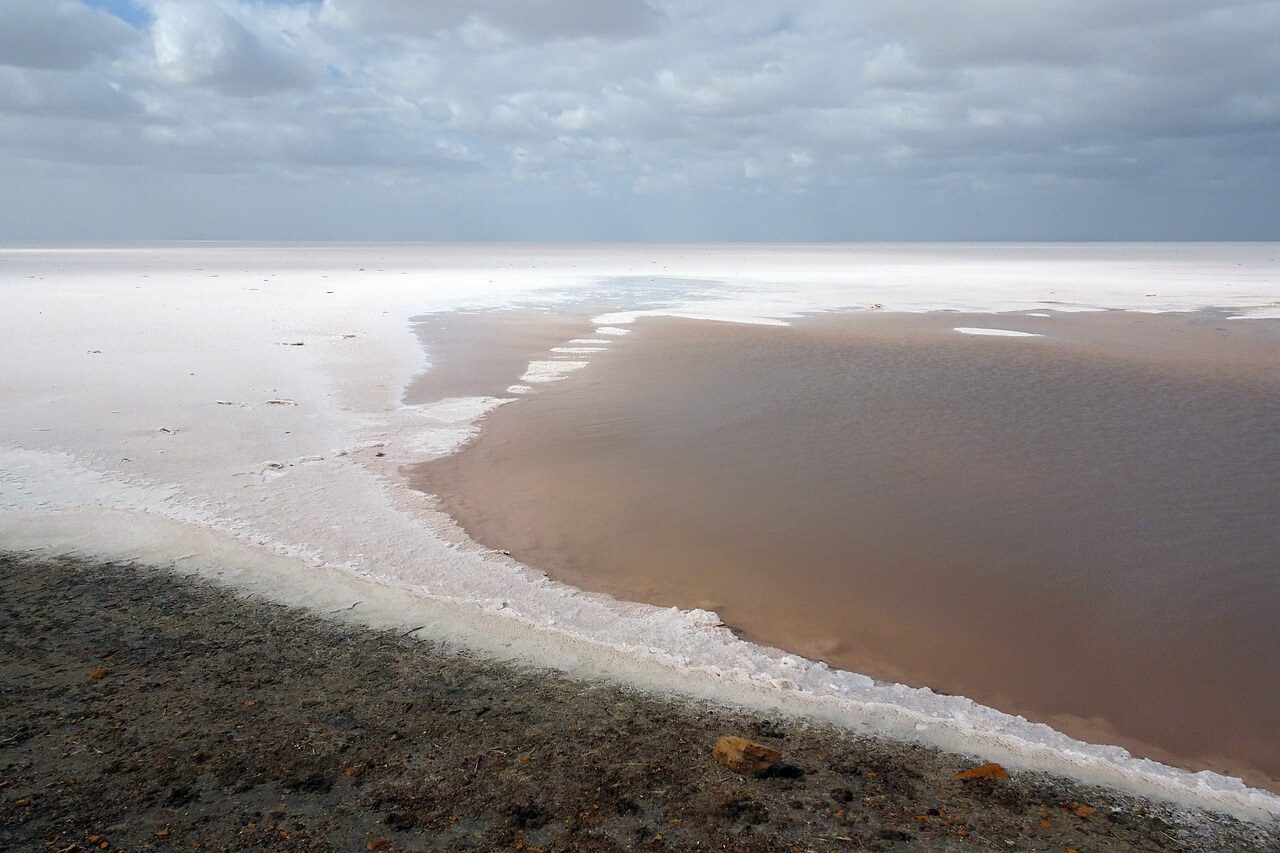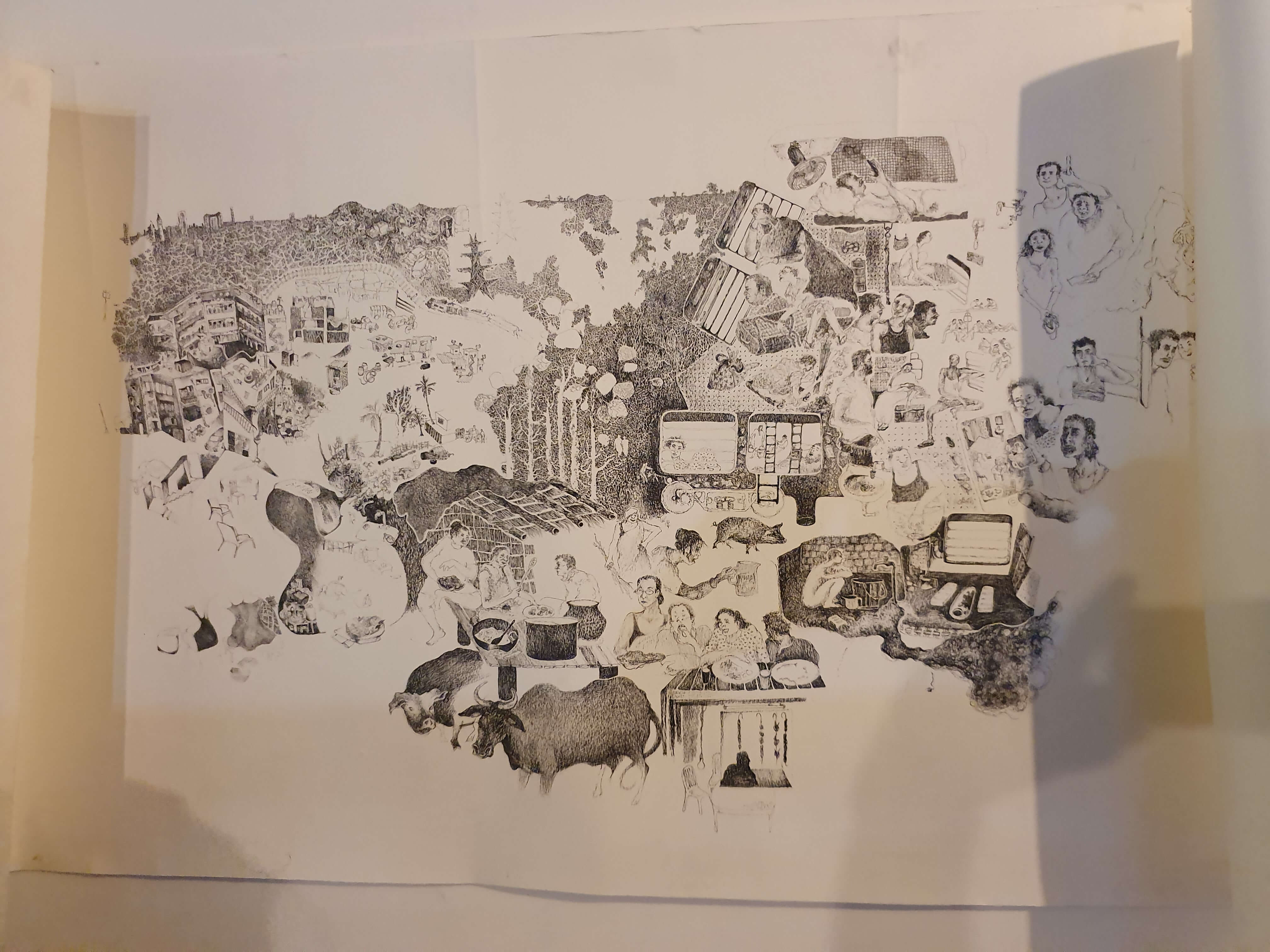Reading Time: 5 minutes
Dr. Roopali takes us to Bhuj and its salt marshes, in Gujarat. She talks about exquisite handicrafts, embroidered textiles, bold brave women, an earthquake, destruction, and flamingoes. An exclusive for Different Truths.

Bhuj, I remember as a city of crisscross alleys. You could walk down those narrow streets only to be transported to another world. Silverware and jewellery, mirror and embroidered textiles, woollen shawls and handicrafts filled the streets with small shops. There was also exquisite and unique painted furniture. Fine examples of Gujarati architecture in the form of houses and temples dotted the city. Bhuj, a unique historical site in India is the most important town of the Kutch region in India’s western state of Gujarat.
A local journalist offered to take me into the interior villages like Anjaar, Bacchau, Bhujodi and Khavda. Here, we were greeted by whitewashed rotund thatched mud houses with whitewashed exterior walls. Broken pieces of mirror and colourful etchings marked the exterior walls. Inside, in the rasoi (kitchen) space, sat vessels gleaming and beaming from wooden shelves.
Women Entrepreneurs
Here, women are the entrepreneurs. Trunks full of handicrafts spewed toran door adornments, wall hangings, jackets, blouses, bedcovers, and quilts! Under wooden cots lay traditional objects of desire, fashioned from recycled and reused materials, including old saris.
The entrepreneurs had honed their sales skills to perfection.
The entrepreneurs had honed their sales skills to perfection. They spoke a smattering of Russian, German, French and Japanese. They were accustomed to dealing with tourists from abroad. They were bold. They were beautiful. And they did not allow haggling.
Nomadic Pastoral Community
Kutch is also home to the Rabaari – a nomadic pastoral community of animal herders. They believe that Lord Shiva put them on earth to tend to the camels owned by Parvati. A long history of migration from the Himalayas is said to have brought them to Kutch. Rabaari women are known for their exquisite embroidery work. This is also considered a very important wedding dowry item.
But this was before the earthquake.
Twenty years ago, on January 26, 2001, an earthquake measuring 7.7 on the moment magnitude scale, struck Gujarat.
Twenty years ago, on January 26, 2001, an earthquake measuring 7.7 on the moment magnitude scale, struck Gujarat. Bhuj was only 20 kilometers from the epicentre. The town was almost destroyed. Its satellite villages flattened.
The earthquake killed more than 20,000 people, injured 167,000 and destroyed nearly 340,000 buildings. It wrecked 8000 villages. More than a million people were left without homes. In Anjaar village, I bought shawls, ate special milk mithai in Khavda, and bought embroidered skirts in Bhujodi. The earth had split. And the rubble had buried an aesthetic people, a heritage, and a whole way of life.
Today, Bhujia hill on the outskirts of Bhuj has a Smritivan.
Today, Bhujia hill on the outskirts of Bhuj has a Smritivan. A memorial forest dedicated to those who lost their lives in the earthquake. More than 13,000 memorial trees are planted here. This reminds me of the village Lidice in the Czech Republic, where rose bushes from all over the world commemorate the courage of a people.
Like the legendary Phoenix, the city of Bhuj and its people have risen from its funereal ashes. The resilience of the Kutchi people, the indefatigable helping hands of India’s armed forces, and volunteers from all over the world have helped Bhuj back on its feet. Today, Bhuj’s major tourist attractions are the Aina Mahal and Paraag Mahal, which were restored after the earthquake.
Largest Salt Deserts
The Rann of Kutch is only 95 kilometres from Bhuj, in Kutch District. It is about 7500 square kilometres in area and is known to be one of the largest salt deserts in the world. The word Rann means “salt marsh.”
As we got out of the olive-green Army vehicle to look at the salt desert, we noticed some people walking toward us on the salt.
As we got out of the olive-green Army vehicle to look at the salt desert, we noticed some people walking toward us on the salt. They half ran, half stumbled to meet us. Military vehicles almost always create excitement especially in these areas. So, we hastily walked over to meet our new friends. As we got closer, we saw a few staggering towards us. We were naturally filled with curiosity.
We exclaimed in surprise, as we discovered they were not people but flamingoes! The Rann encompasses a true saline desert, which is home to thousands of pink Greater Flamingoes. This region is one of the largest breeding grounds for this exotic bird.

Pink Flamingoes
In a documentary not very long ago, I saw beautiful pink Flamingoes. Flocks and flocks of them. Laying eggs in the marshes and sand. Rearing their chicklets and one day taking them along and flying away. To faraway lands. Their pink colour is like a flame. The word Flamingo comes from the Spanish and Latin word flamenco, which means fire.
There was nothing flamboyant about these flamingoes. They were not pink.
There was nothing flamboyant about these flamingoes. They were not pink. These were greyish and they were dying. To our horror they were struggling to reach us for a morsel of food. And we were empty handed. Others lay dying. Or dead. They were literally begging. There was something so human about them. We watched their hunger helplessly.
The increasing salinity of the mudflats, we were told, had killed plankton and small fish. The right mix of brackish water and sweet water is critical for the survival of plankton, algae, and fish. New dams on rivers flowing into the terrain had disturbed this balance. There was not enough to eat. We did not have the heart to photograph this tragedy. Now memories rush out to haunt the images seared into my mind and heart. To this day, I am unable to rejoice at the sight of these beautiful birds.
You can spot flamingoes if you happen to be on the northwestern coast of India. If you look up to the sky, you may be able to see flocks of these elegant creatures flying overhead. A faraway destination mapped out.
Breeding Cycle
Annual monsoon rains turn the hot baked Rann into marshy land. That is when the flamingoes begin to arrive. August, September, and October see them beginning their breeding cycle. Their nests are made of mud. A raised small castle like construction.
This monsoon, they say the pink long legged visitor birds have flown in from many parts of the world.
This monsoon, they say the pink long legged visitor birds have flown in from many parts of the world. There is plenty of plankton and fish and safe places for their little babies to birth.
While we Corona-cower inside our homes, Earth is rejuvenating herself. Folklore says pink flamingoes are honoured guests of King Lakho Fulani, who ruled one thousand years ago.
I often wonder how the Flamboyant Flamingoes know where to go!
Visual by Different Truths
Feature Picture: https://www.needpix.com/photo/1702282/


















Beautiful write up. Almost everywhere migratory birds are finding it difficult to survive either because of destruction of habitat, or as this write up makes it clear because of water bodies dying due to excessive salinity/ chemicals. It is a pity that we are losing many species owing to our skewed ideas of development,